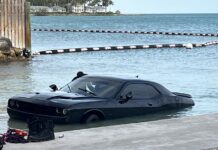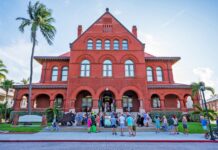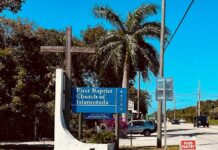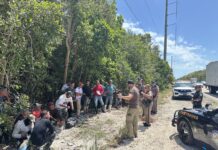
The Key West Extension of Henry Flagler’s Florida East Coast Railway did not bring loads of tourists to the island chain. The building of State Road 4A, the original Oversea(s) Highway, hoped to rectify that.
The original highway plan envisioned a complete system, not a road that traveled from the mainland south and abruptly ended at Lower Matecumbe Key — the road picked up again at No Name Key. From there, cars could drive the rest of the way to Key West. The 40-mile-gap between Lower Matecumbe and No Name required an automobile ferry to navigate.
According to a series of newspaper articles that either quote or evoke the words of local politicians, the original plan was to have the road extend beyond Lower Matecumbe Key, cross to Long Key via a bridge of viaduct design, then travel across the island. From there, a viaduct would link Long Key to Grassy Key, where the Vaca Key Road would travel down the Middle Keys to Knights Key. A viaduct would connect Knights Key to No Name Key.
After it was understood that building the bridges would take two years and $13,500,000, authorities came up with another plan. That plan was to bridge the 40-mile highway gap between Lower Matecumbe Key and No Name Key with automobile ferries — the county purchased three vessels for $120,000.
The ferry system was problematic. Beyond natural forces like wind and tide that could make the trip across the open water a challenging passage, it was not uncommon for people driving from the mainland, over the bumpy and dusty road to Lower Matecumbe Key, to discover the ferry was filled to capacity.
In an article published in the Jan. 24, 1928, edition of the Miami Herald, the day before the official opening of the highway and six months after it unofficially opened to public transit, Dr. Fons Hathaway, chairman of the state road department, who was also speaking for Governor Martin, assured the citizens of Monroe County that the state had plans to construct a series of automobile bridges to connect Lower Matecumbe to No Name Key.
In the meantime, the promise of a road to Key West prompted the Cuban government to jump on the highway bandwagon. Anticipating an influx of tourists driving to Key West, “the Cuban government appropriated one million dollars to build highways deep into the heart of the interior and President Machado announced that ferries will be built by the government to transport automobile tourists across the 90 miles of gulf separating Havana and Key West (Miami Herald, Jan. 25, 1928).”
Still, plans were underway to build a road through the Middle Keys. According to the Jan. 24, 1928, edition of the Miami Herald, engineers thought additional road work over Key Vaca, Crawl Key and Grassy Key would be completed within a few months. The conduit was referred to as the Key Vaca Road.
The Key Vaca Road project was awarded to the Jenners Brothers after they submitted a bid of $167,000 to build 12 miles of road across Grassy Key, Crawl Key and the Vaca Keys — as well as the bridges necessary to complete the project. According to at least one story, the job was supposed to be completed by Nov. 22, 1928 (and the actual number of dollars it took was quoted as $166,844).
By all accounts, the Jenners Brothers fulfilled their agreement and built the Key Vaca Road on time. By Oct. 15, 1928, a public request for bids to build two ferry slips, one at Hog Key and one at Grassy Key, was making the rounds in local newspapers.
Shortly after completion, however, a tropical storm of some degree blew over the Middle Keys and damaged the Key Vaca Road, and it was not until 1931 that the road was repaired and opened to traffic. The ferry terminals were addressed in the April 15, 1931, edition of the Miami News: “Building the approaches and repairing the slips necessary to put the Grassy Key – Key Vacas ferry route in condition.”
The new route through the Middle Keys opened in early to mid-April. An article from the Feb. 17, 1931, edition of the Key West Citizen announced that the new ferry system eliminated 1 hour and five minutes from the route between Key West and Miami. According to Carl Bervaldi, chairman of the county commissioners, “The change, just inaugurated, will make travel over the highway more popular since the former 40-mile ferry trip is divided and its monotony relieved by the driver over the Key Vacas road.”
The article added that the inaugural use of the road and ferries in the Middle Keys had been done in contrary weather and that the new additions to the route could save even more time when conditions improved.
The automobile bridges connecting the mainland to Key West were eventually built. That version of the highway, the Overseas Highway 2.0, opened in 1938, and when it did, the ferries were no longer required.






















